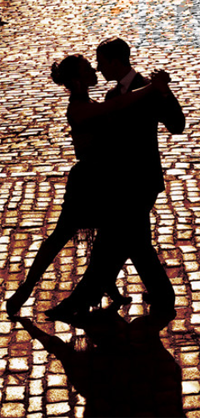
 |

|
When & Where September 21, 2023 at 2pm | Orpheum Theatre Conductor Andrew Crust Host Christopher Gaze PROGRAM Ginastera's Estancia: Four Dances: The Land Workers, Falla's El Amor Brujo: Ritual Fire Dance, Turina's La Oracion del Torero, Piazzolla's Milonga del Angel, Schifrin's Tango del Atadecer, Villa-Labos's Bachianas Brasileiras, Arturo Márquez's Danzon No. 2, Moncayo's Huapango for Orchestra, Moncayo's Huapango for Orchestra & Ginastera's Estancia: Four Dances IV. Malambo - Final Dance Reviewer John Jane |
||
|
The Vancouver Symphony Orchestra opened a new season of their immensely popular Tea & Trumpets concert series with a new series sponsor Parc Retirement Living TM. The first concert’s central theme features music from South America, Mexico and Spain. Maestro Andrew Crust opened the program with Argentine composer Alberto Ginastera's Los trabajadores agricolas (the land workers) the first movement of his ballet suite in four movements Estancia: Four Dances. The piece is certainly an audience pleaser with its lively tempo. The expansive structure is essentially derived from a poem by José Hernández called Martín Fierro. The texture of Ginastera's music evokes the unique lifestyle of the gaucho. The Ritual Fire Dance from Spanish composer Manuel de Falla’s El Amor Brujois is instantly recognizable. At first listen, its exotic melody sounds like it could easily be part of Georges Bizet’s opera Carmen. By contrast, Joaquín Turina’s La Oracion del Torero (The Toreador's Prayer) is contemplative. Originally composed for a string quartet, it consists of five parts that totally relies on the strings. The piece intends to delineate the fear that the toreador faces every time he enters the bullring. If you had not previously heard Astor Piazzolla's Milonga del Angel, (Dance of the Angel) you would somehow know it was a slow tango. Its forceful rhythm puts it somewhere between jazz and classical music. The otherwise mandatory accordion is happily replaced with solo bassoon for this performance; exquisitely played by the orchestra’s principal bassoonist Julia Lockhart. ‘Lalo’ Schifrin's has provided us with some of the best film scores heard. If you had visited your local cinema in the eighties and seen an action flick, chances are you would have also heard one of Schifrin's many original soundtracks. Though perhaps one of his lesser known film scores, yet arguably one of the Argentine pianist’s best, is from Carlos Saura's 1998 film “Tango.” Tango del Atadecer is heard during both the opening and closing credits, the work sensually expresses a special place in Argentine culture and history. As its title suggests, Heitor Villa-Lobos' Bachianas Brasileiras is a Brasilian homage to Johann Sebastian Bach. One can certainly hear the influence of Bach's Toccata and Fugue in the nuanced violin playing by concert master Nicholas Wright. In spite of its complex structure, Mexican composer Arturo Márquez's Danzon No.2 is considered Mexico’s unofficial alternative national anthem. As well as being true to the Mexican partnered dance form, Danzón No. 2 is also important from a cultural point of view. Besides having passion to spare, it also offers a certain level of sophistication. The concert ends
almost as it started – with Alberto Ginastera's Estancia:
Four Dances. Performed as a planned encore, Malambo, the
ballet’s fourth sweeping movement is played in duple time. It
surely left the audience with an affinity for the heroic gaucho. © 2023 John Jane |
|||
|
|
|||
|
|
|||